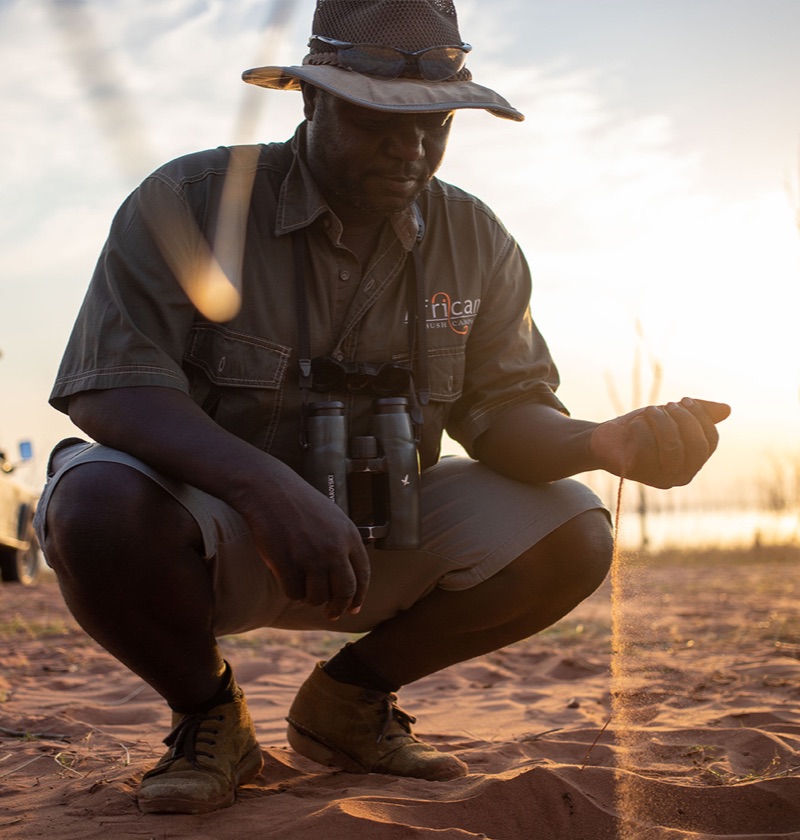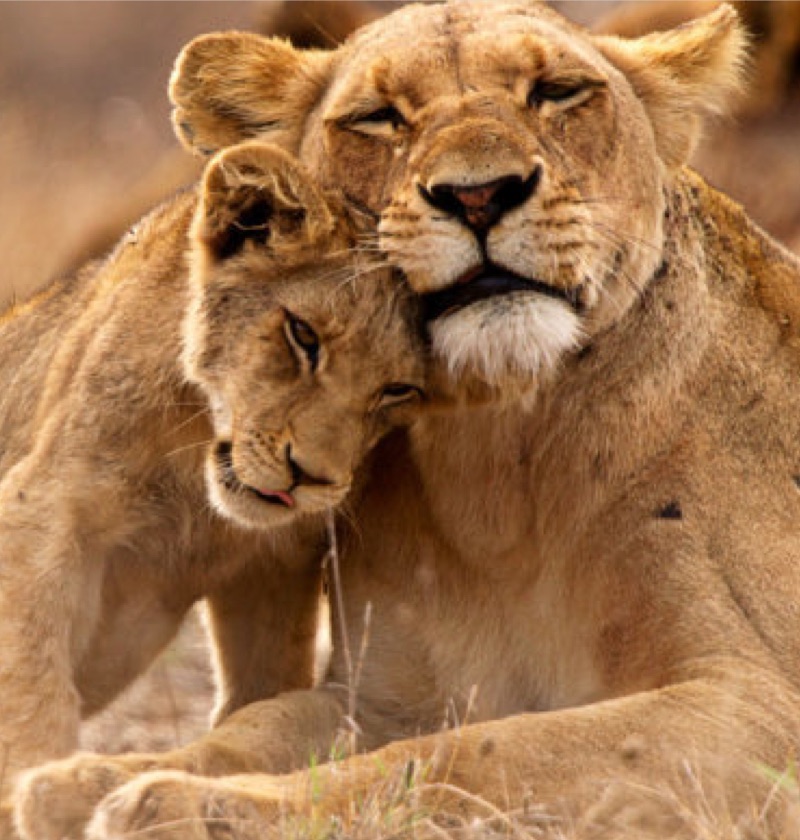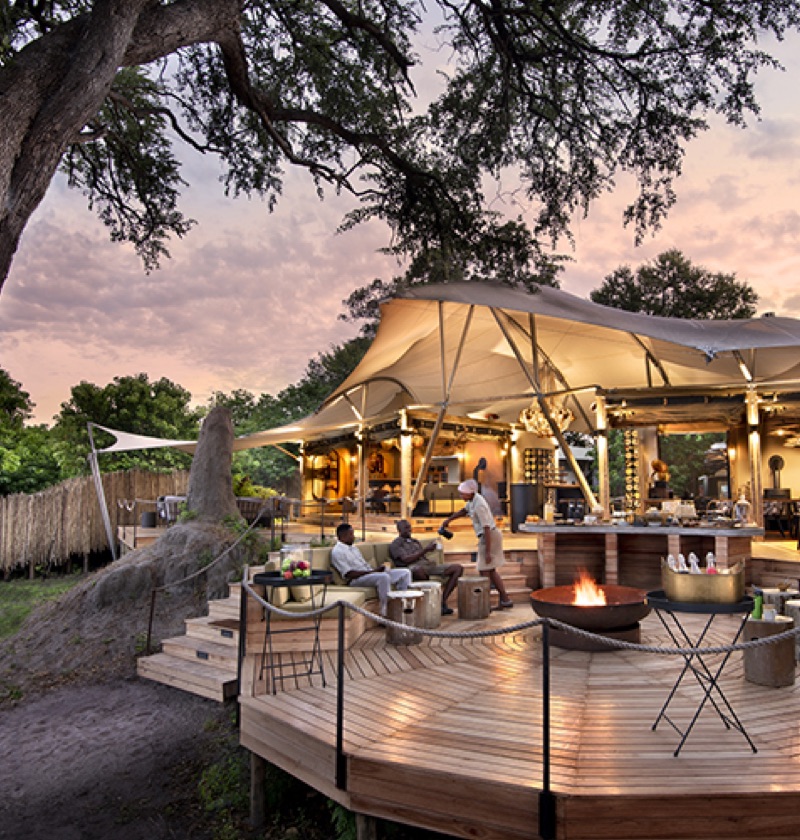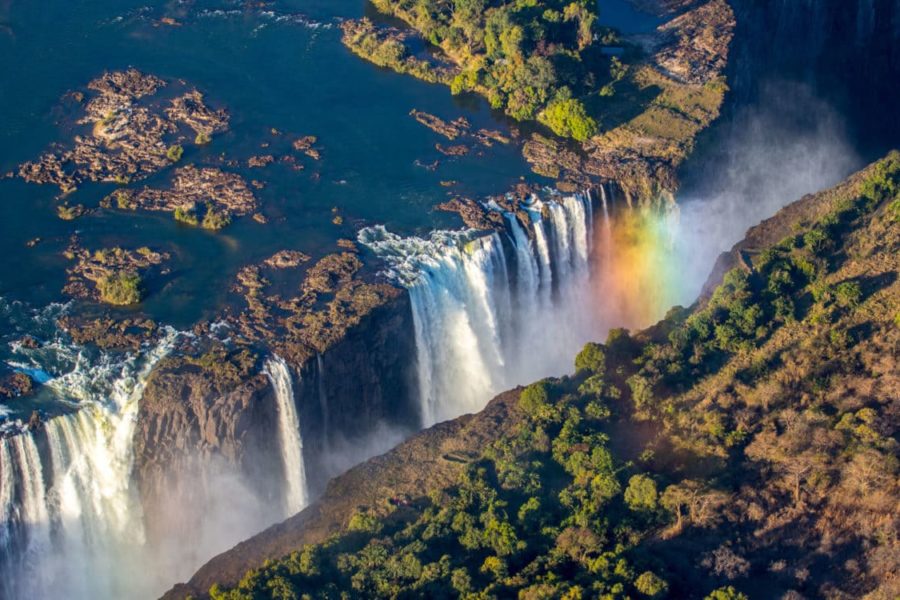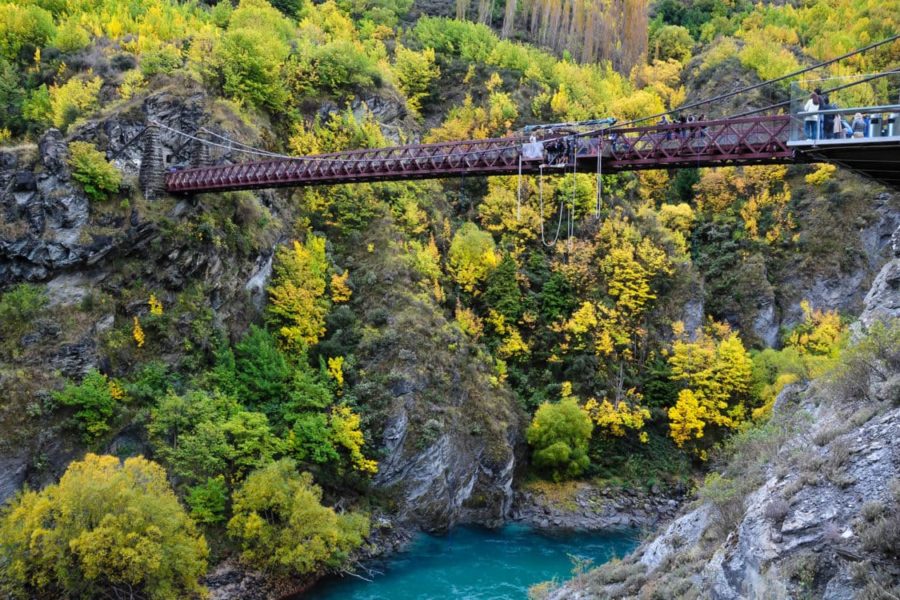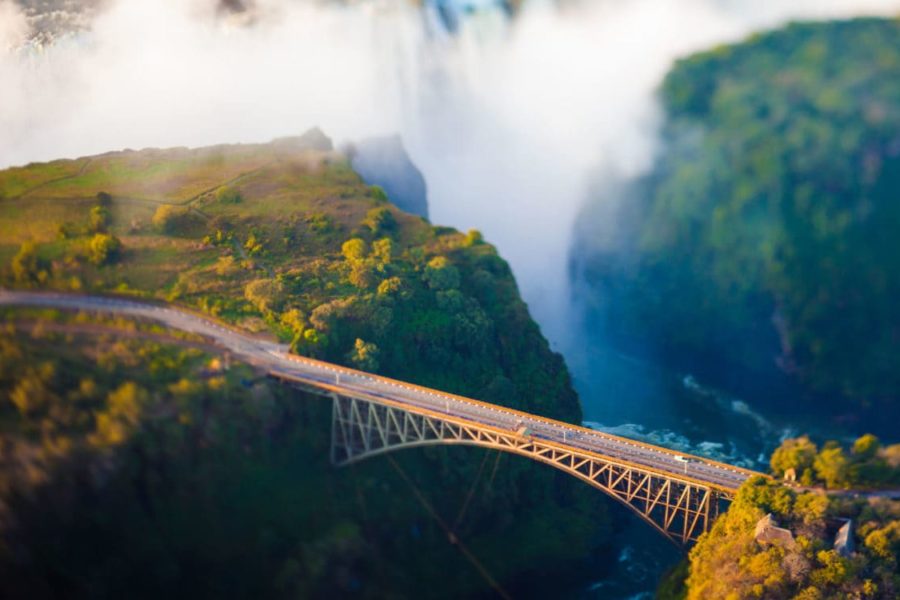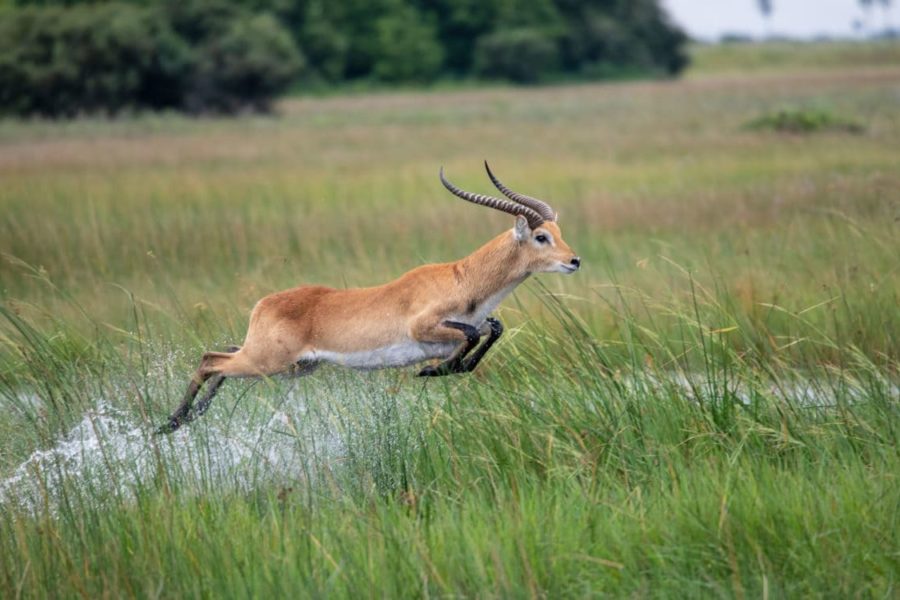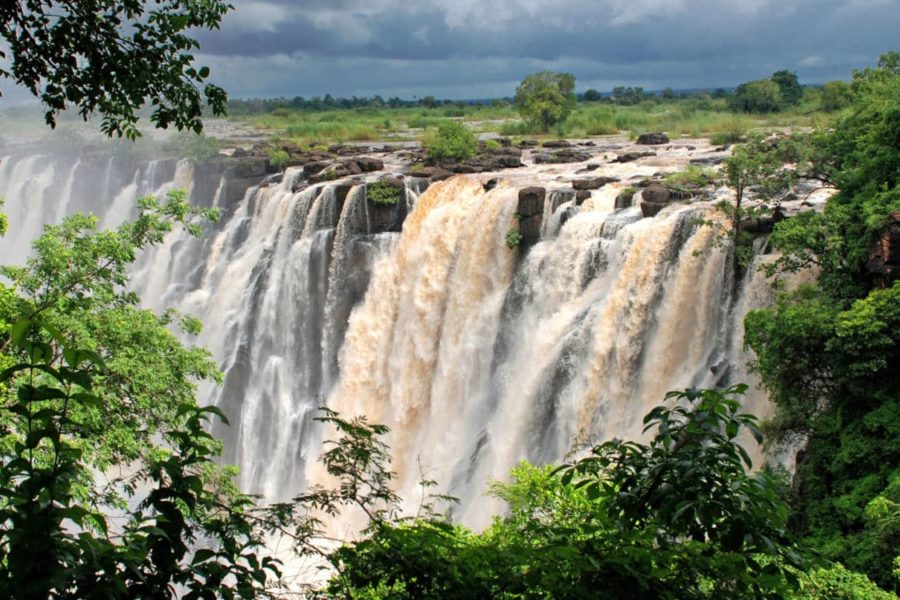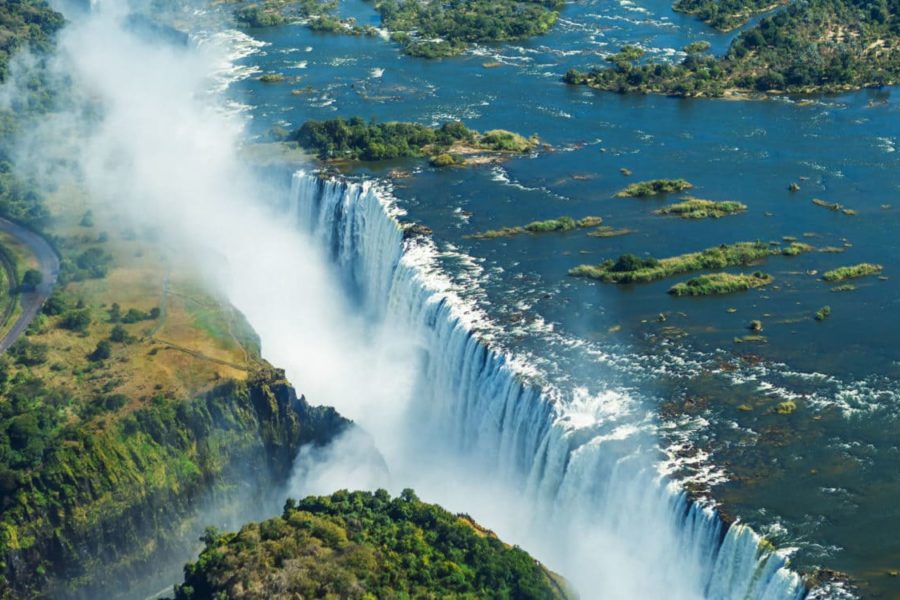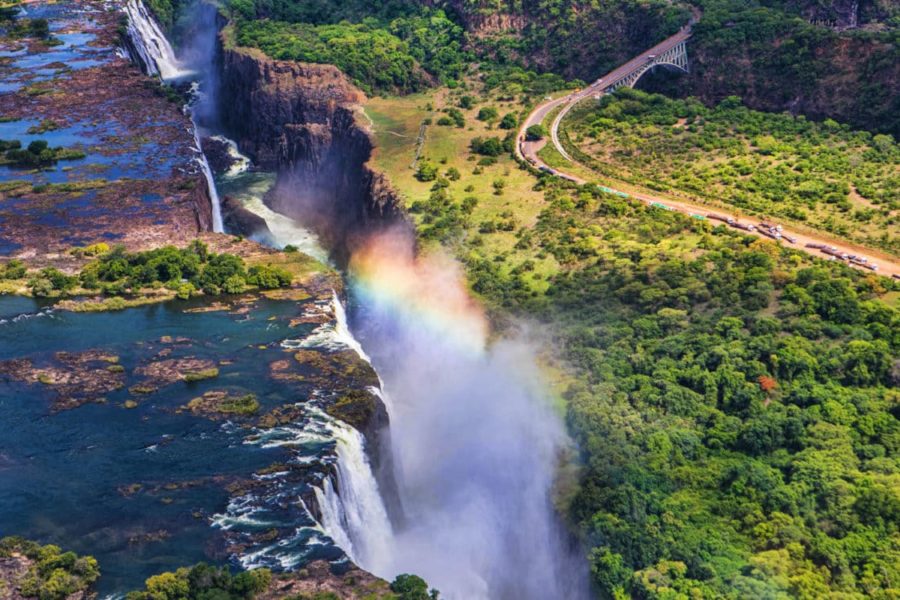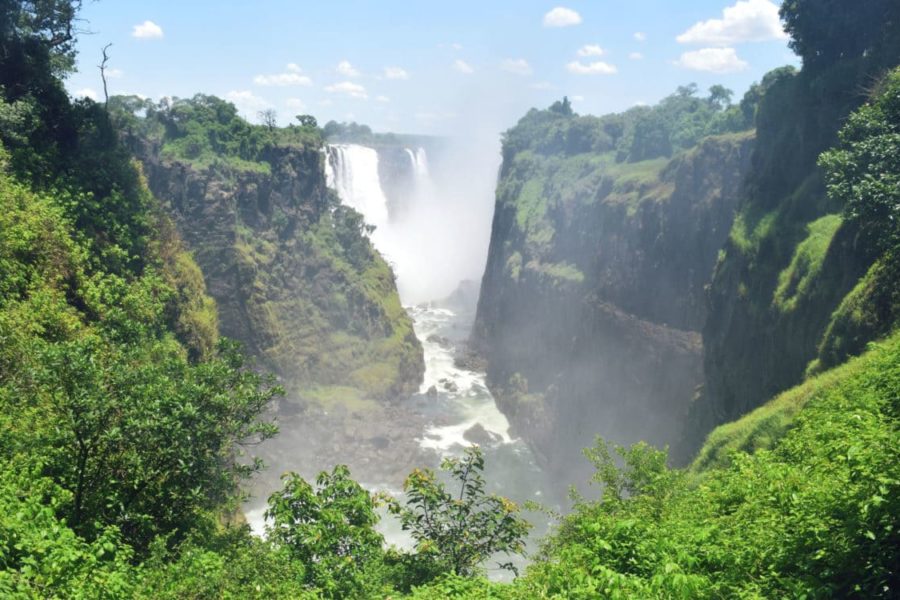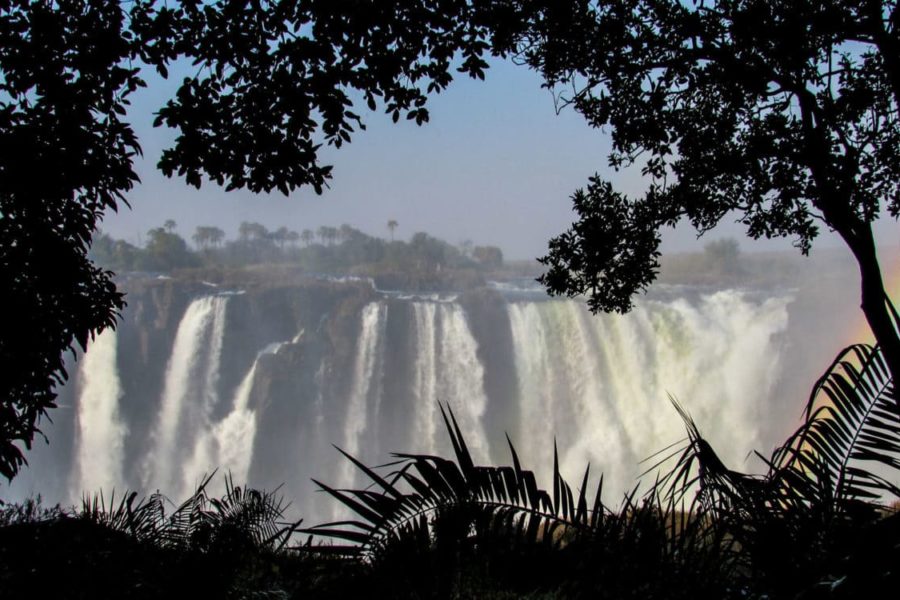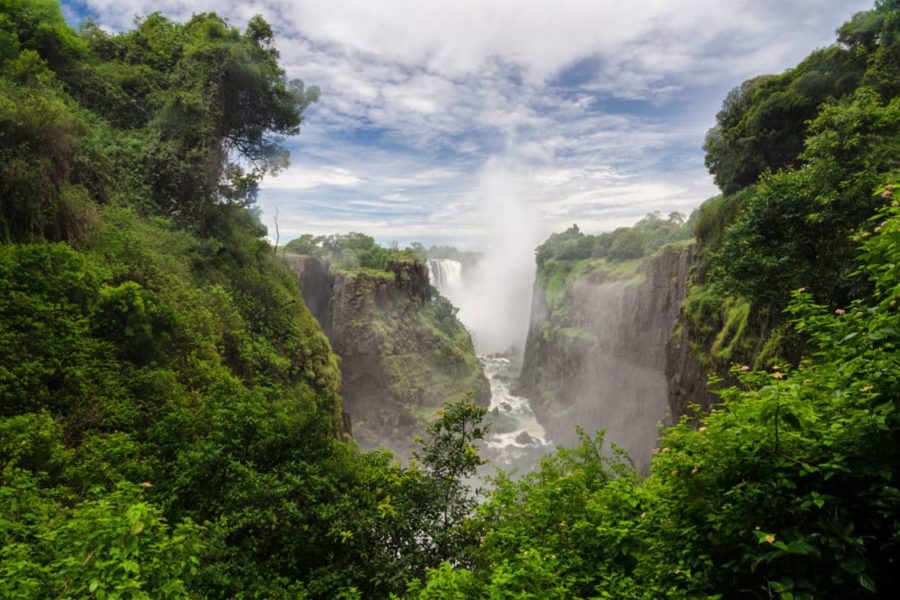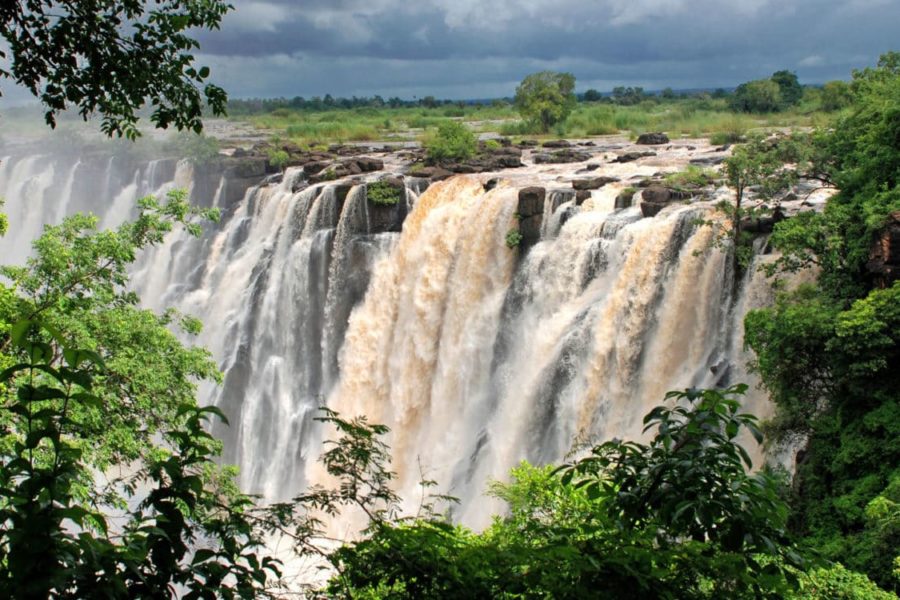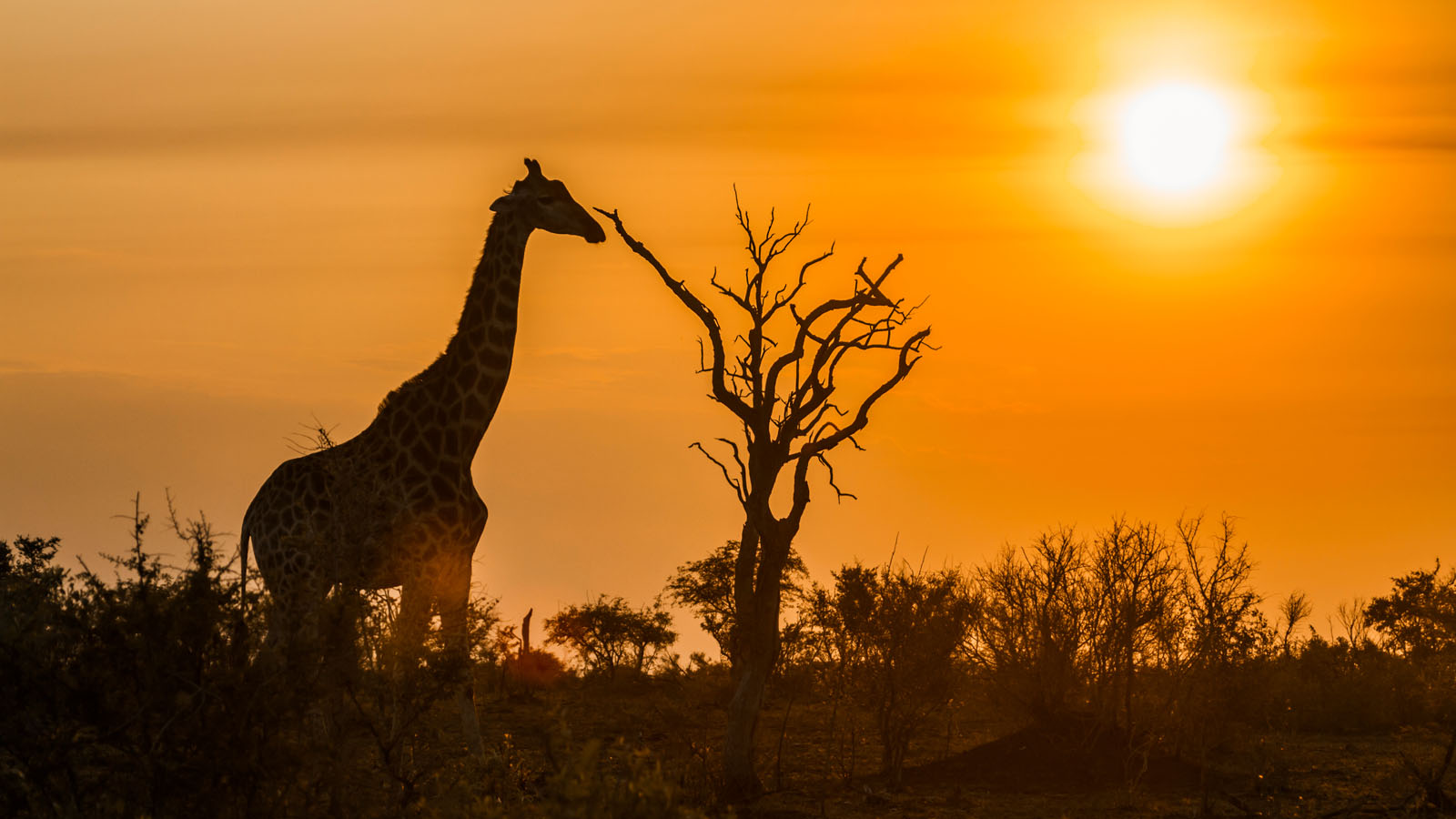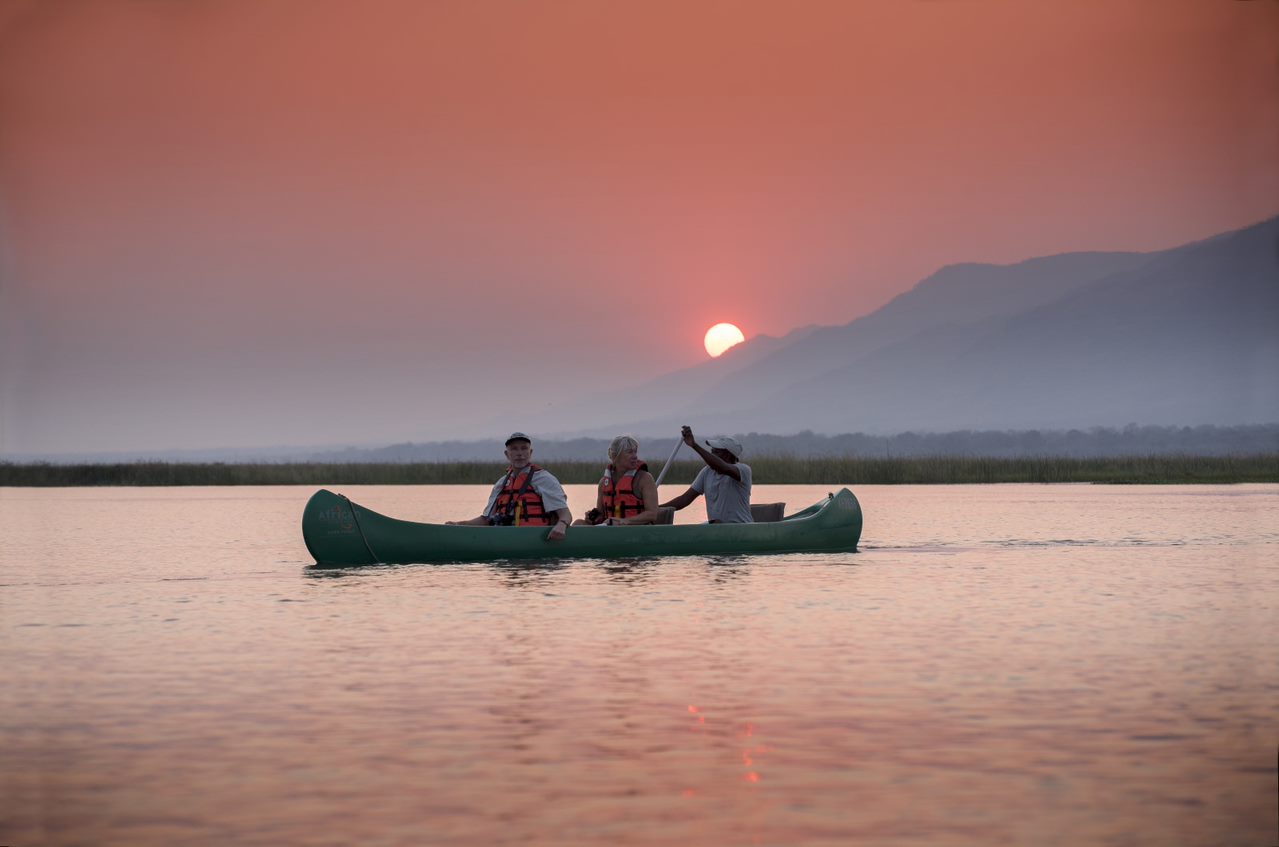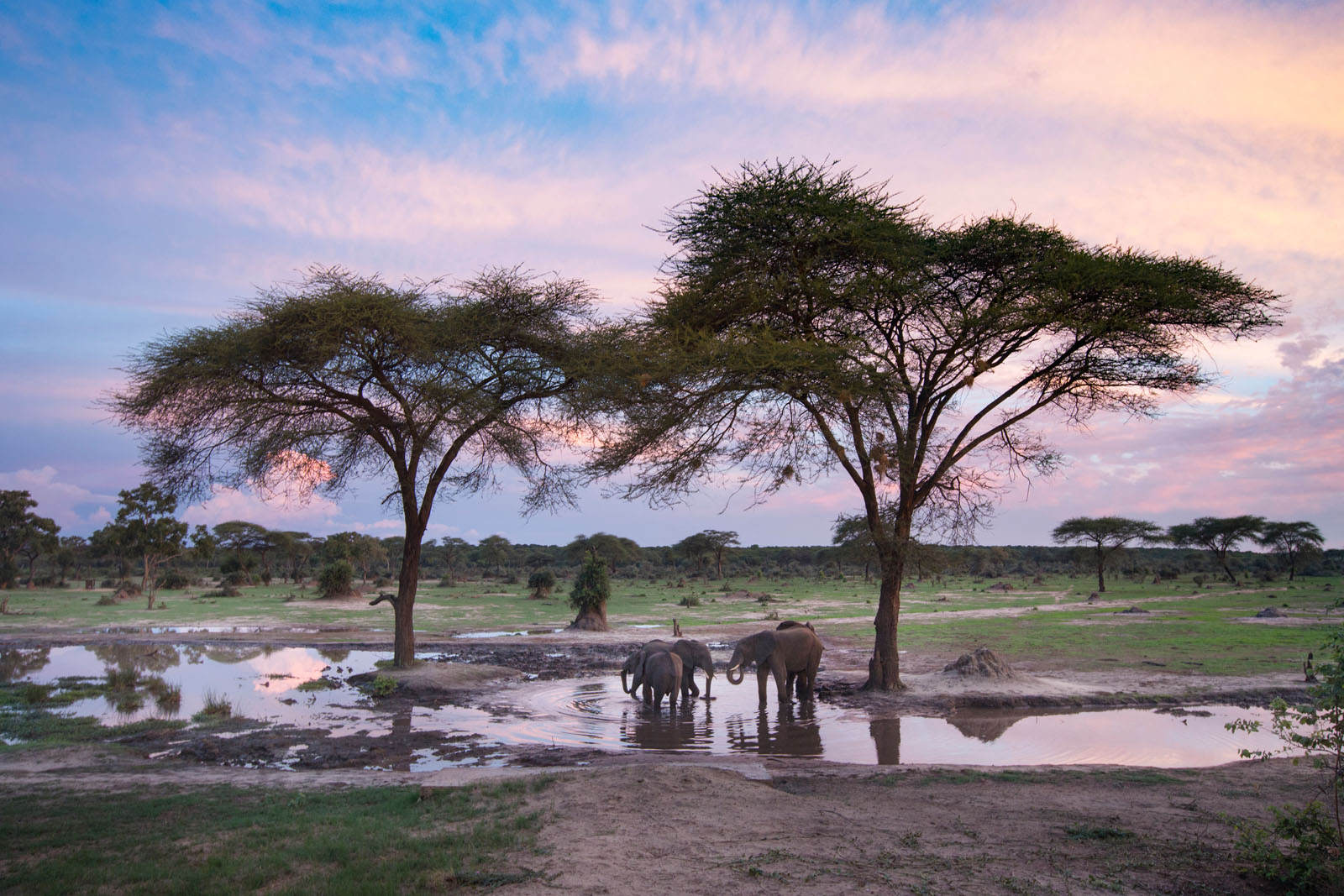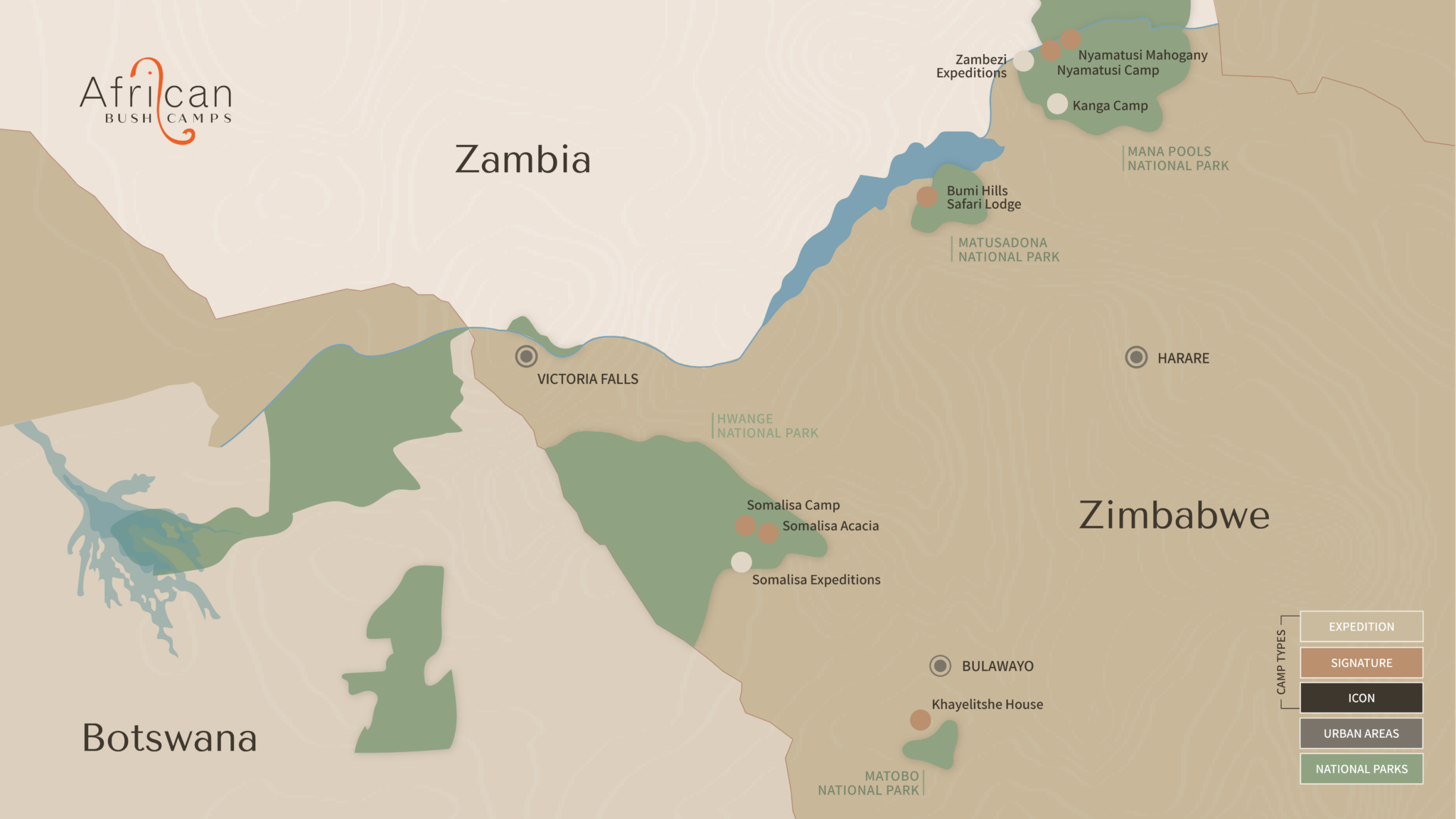January is the summertime, with warm daytime temperatures around 30°C. The afternoon summer rains bring a freshness to the season and landscapes, replenishing the plants, waterholes and rivers. Summertime in Mosi-oa-Tunya brings dramatic late-afternoon thunderstorms, which are an exhilarating show of the power of Mother Nature. At the Falls, the summer rains are yet to fully filter down from the highlands, so the water level is medium to high, depending on how much rain has fallen over the previous months.
Plan your Safari
In February, the summertime climate of high temperatures (around 30°C during the day) and late afternoon thunderstorms, continue. This is one of the best times to experience the Zambian side of the Falls at peak flow, as the summer rains swell, and visitors see the spray at its most voluminous. At night, witness the skies light up with breathtaking lightning storms, while the summer rain showers generally settle into a pattern: typically expected around late afternoon.
Plan your Safari
March is the tail-end of the summer season, it is one of the best times to see the rainbows created by the thick spray rising from the Falls. This visual – created from the full flowing Falls and rising mist – is fantastic to view from the air. Thanks to a summer season of plentiful rain that has wound its way downriver over the previous months, the waterfall is at its peak flow on both the Zimbabwean and Zambian sides. From the refreshing mist to the thundering roar of the waters, this is a spectacular time to experience one of Earth’s natural wonders. Given the high level of the water, some activities, such as white-water rafting or visiting Devil’s Pool, are unavailable for safety reasons. However, it is a great time for a sunset cruise along the mighty Zambezi River.
Plan your Safari
In April there are still warm days to enjoy as temperatures continue to hover around 29°C. The nights bring cooler weather, as the mercury drops to the mid-to-late teens. The Falls are still full to the brim from the summer rains, and the dense spray and thunderous din is quite an experience, especially when viewed from the air.
Plan your Safari
Come May, the Falls are still in full flow. Daytime and evening temperatures have cooled slightly, with averages around 27°C and 10°C respectively. Most notable is the transition from the rainy summer season to the dry winter season. May marks the start of the winter season and sees far less rain than the previous months.
Plan your Safari
Mosi-oa-Tunya National Park’s location and size stops it from being as affected by the seasons as much as other parks within Southern Africa. Elephants regularly move in and out of the park as they swim across the Zambezi River. Wildlife numbers are at their highest during the dry season – June to September – as they congregate around the water sources in the park. The intense spray from the Victoria Falls is reduced with the end of the rains, allowing for better viewing and photography experiences of the cliffs and gorge.
Plan your Safari
Mosi-oa-Tunya National Park’s location and size stops it from being as affected by the seasons as much as other parks within Southern Africa. Elephants regularly move in and out of the park as they swim across the Zambezi River. Wildlife numbers are at their highest during the dry season – June to September – as they congregate around the water sources in the park. The intense spray from the Victoria Falls is reduced with the end of the rains, allowing for better viewing and photography experiences of the cliffs and gorge.
Plan your Safari
Mosi-oa-Tunya National Park’s location and size stops it from being as affected by the seasons as much as other parks within Southern Africa. Elephants regularly move in and out of the park as they swim across the Zambezi River. Wildlife numbers are at their highest during the dry season – June to September – as they congregate around the water sources in the park. The intense spray from the Victoria Falls is reduced with the end of the rains, allowing for better viewing and photography experiences of the cliffs and gorge.
Plan your Safari
September sees the beginning of the low water months at the Victoria Falls. This means the dramatic cliff face is revealed on the Mosi-oa-Tunya side of the Falls for excellent photographic opportunities. There is very little spray and guests can take in the full wonder and sheer size of the falls beneath them. Low water levels present the perfect opportunity for white-water rafting or taking a dip in Devil’s Pool. The temperature begins to warm up again, with sunny days and clear skies.
Plan your Safari
October sees temperatures reach their peak during the day, around 32°C. The weather is excellent for experiencing the Zambezi River either by canoe or on a sunset cruise. Tracking the rhinos of the Mosi-oa-Tunya National Park is an activity that one can experience year-round. The dramatic cliff face of the Victoria Falls is revealed on the Zambian side, for excellent photographic opportunities. There is very little spray and guests can take in the full wonder and sheer size of the Falls beneath them.
Plan your Safari
November usually brings the start of the rainy season. So, while the waters of the Falls are still low, you can expect some afternoon rain showers. Summer temperatures in Mosi-oa-Tunya National Park reach average highs of 33°C and lows of 20°C, making for a great summer getaway. At the Falls there is very little spray and guests can take in the full wonder and sheer size of the falls beneath them. The low water levels present the perfect opportunity for a visit to Livingstone Island, white-water rafting, or taking a dip in Devil’s Pool.
Plan your Safari
December is usually the rainiest month of the year, seeing around 11 days of afternoon rains, which helps to reinvigorate the fauna and flora after months of dry weather. The water level of the Falls begins to rise, however, there is still good visibility for photographs, and low water levels present the perfect opportunity for white-water rafting, ziplining across the gorge, or taking a dip in the Devil’s Pool.
Plan your Safari


